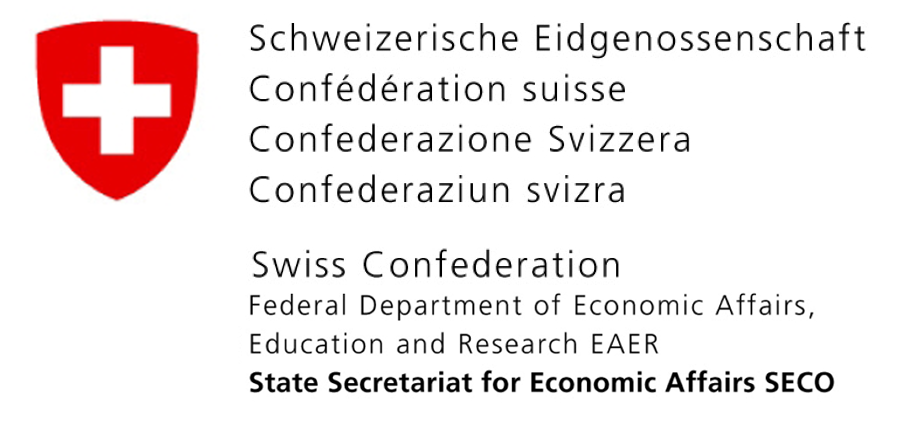Governance Indicators for the Transport Sector in Africa
SSATP has recognized governance as a cross-cutting issue in its on-going Second Development Plan (2009-2013). In a first step towards a greater advocacy effort aimed at improving governance in the transport sector in Africa, SSATP identified a critical subset of governance indicators in the transport sector that can be used to demonstrate in a clear, measurable way, the quality of governance in a particular country / sector / sub-sector.
The ‘candidate’ indicators were matched against a framework of seven dimensions:
|
Dimension |
Definition |
|---|---|
|
Financial Management and Value for Money System |
Extent to which sustainable financial institutions and arrangements have been put in place for maximum rural and urban transport service delivery. |
|
Administrative and Regulatory Procedures |
Whether efficient and effective administrative units and regulatory arrangements have been made to maximise delivery of rural and urban transport benefits. |
|
Third Party Engagement |
Degree to which consultation with civil society and private sector over transport sector development issues helps to ensure the identification of, and action to meet, priority needs. |
|
Transparency and Access to Information |
Whether relevant and reliable information is available to all stakeholders. |
|
Anti-corruption Effort |
Evidence of specific investment and demonstrable progress to reduce corruption |
|
Accountability |
How leaders account for progress in delivering beneficial transport services using public money. |
|
Equity of Benefits |
Whether pro-poor and pro-growth transport sector policies delivery measurable transport benefits to individuals and society. |
The indicators were also assessed against a set of criteria that would validate them:
|
Validation Criteria |
Definition |
|---|---|
|
Actionable |
Indicator is narrowly and explicitly defined to provide clarity regarding the options that need to be considered to determine the steps that can be taken to improve the score of the indicator; the indicator can be clearly linked to the mandate/responsibilities of an organisation or individual so locates solutions within specific institutions as the basis for decision making; knowing about the score will enable an organisation or its key stakeholders to do things better or more effectively; an institutionalised procedure is either in place or could reasonably be set up to collect data on the proposed indicator in future. |
|
Credible |
A variable that adequately reflects the concept phenomenon it is intended to measure; indicator does not set direction for progress (so is neutral) or say when change will be achieved; “lead” indicators located in the arena of formal rules will be avoided if possible; is appropriate to the needs of the user; indicator is not unduly affected by exogenous forces. |
|
Nationally Own-able |
Indicator will resonate with the intended audience; is sensitive to the concerns of government; data comes from sources that are politically acceptable and can be embraced by reformers; indicator is defined in a way that permits meaningful discussion regarding the appropriateness of any given rating; data can be easily updated by country champions or members of the public with the minimum of specialist knowledge; indicator is as consistent as possible with those already in use or already in use. |
|
Relevant |
Indicator captures a critical dimension of the quality of governance; reflects important issues that warrant high level policy advocacy; has potential to advance constructive development policy in the transport sector; |
|
Sensitive |
Indicator varies sufficiently to allow measurement of changes in the underlying phenomenon; unit of measurement is conducive to time-bound targeting; interventions can impact on this indicator. |
|
Understandable |
Indicator is easy to understand by people who are not experts; an unambiguous measurement that is intuitive in the sense that it is obvious what the indicator is measuring and how it would be interpreted in practice; makes the same sense to all; easy to communicate; potential user’s capacity to absorb information is respected. |
|
Available |
Data source exists – as primary data (collected by in-country institutions, such as the national statistics office) or secondary (other organisations); data collection is frequent and/or regularised without high cost or risk; there is a minimal time-lag between the collection and reporting of data to ensure that indicators are reporting current rather than historical information/information can be gathered while there is still time to act. |
|
Reliable |
Data are trustworthy and defendable; data are replicable through a well-documented process; measurement process is methodologically sound; data do not change according to who collects. |
The indicators were then tested against a number of other quality assessment criteria to assess whether they could be selected as a mutually reinforcing “set”.
|
Quality Assessment Criteria |
Definition |
|---|---|
|
Balance between Quantitative and Qualitative Measures |
Basket includes qualitative as well as quantitative indicators; some variables are suitable for rigorous quantitative analysis; some variables are included that allow the measurement of subjective judgment capturing how key stakeholders perceive the governance environment and outcomes in the transport sector. |
|
Balance between Policy, Systems and Outcome |
Basket contains indicators which represent all key stages in the policy cycle from policy formulation through systems to outcome in order to balance the mix of lead/lag indicators. |
|
Coverage across Sub-Sectors |
Basket covers all transport sub-sectors since a sufficient number of indicators can be easily adapted to measure the same or similar outcomes in sub-sector domains. |
|
Equity for Stakeholders |
Basket will generate data which can be disaggregated to allow measurement of progress/impact on different demographic groups, particularly men/women, ethnic/tribal, sub-national, professional; variables will allow measurement of the underlying factors that shape power relations and changes in power relations between state and society and between different groups in society; includes direct or proxy measures of the empowerment of the poor. |
|
Regional/national application |
A sufficient number of indicators are applicable at regional level to allow comparisons between regions; a sufficient number of indicators are consistent with those used in other SSA countries so comparisons between nations can be made. |
The indicators are described in the following table.
|
Governance Area |
Indicators |
|---|---|
|
Institutional Mandates and Responsibilities |
Clarity and distinction between mandates and responsibilities of key Ministries, Departments and Agencies in the Transport Sector. |
|
Strategic Priorities |
Coherence of transport sector policy and extent to which its prioritization process is based on objective criteria. |
|
Budget Discipline |
Indicator will resonate with the intended audience; is sensitive to the concerns of government; data comes from sources that are politically acceptable and can be embraced by reformers; indicator is defined in a way that permits meaningful discussion regarding the appropriateness of any given rating; data can be easily updated by country champions or members of the public with the minimum of specialist knowledge; indicator is as consistent as possible with those already in use or already in use. |
|
Program Design |
Indicator captures a critical dimension of the quality of governance; reflects important issues that warrant high level policy advocacy; has potential to advance constructive development policy in the transport sector; |
|
Procurement |
Indicator varies sufficiently to allow measurement of changes in the underlying phenomenon; unit of measurement is conducive to time-bound targeting; interventions can impact on this indicator. |
|
Delivery |
Indicator is easy to understand by people who are not experts; an unambiguous measurement that is intuitive in the sense that it is obvious what the indicator is measuring and how it would be interpreted in practice; makes the same sense to all; easy to communicate; potential user’s capacity to absorb information is respected. |
|
Sustainability |
Data source exists – as primary data (collected by in-country institutions, such as the national statistics office) or secondary (other organisations); data collection is frequent and/or regularized without high cost or risk; there is a minimal time-lag between the collection and reporting of data to ensure that indicators are reporting current rather than historical information/information can be gathered while there is still time to act. |
|
Information |
Dissemination Data are trustworthy and defendable; data are replicable through a well-documented process; measurement process is methodologically sound; data do not change according to who collects. |
|
External Scrutiny |
Rules over membership and appointment process for key transport sector governance boards. |
|
Accountability |
% of recommendations from independent technical and financial auditor reports implemented within one year. |
The proposed indicators will be tested in three countries to validate the methodology used to rate the indicators.







